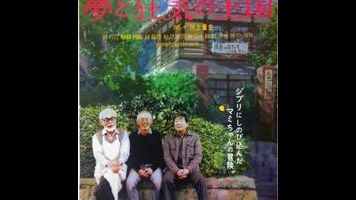The Kingdom Of Dreams And Madness looks behind the curtain of Studio Ghibli

“Filmmaking only brings suffering.” So declares legendary animator Hayao Miyazaki a little more than halfway into Mami Sunada’s The Kingdom Of Dreams And Madness, a documentary that both chronicles the production of his final film, The Wind Rises, and reflects that project’s troubled soul. Miyazaki’s magnum opus, a bittersweet biopic about the cursed dreams of Zero fighter-plane designer Jiro Horikoshi, has been read as something of a self-portrait, but The Kingdom Of Dreams And Madness suggests that we don’t know the half of it.
An unprecedentedly candid look inside Miyazaki’s working life—which seems to be the only kind he’s got—and the inner workings of his Studio Ghibli, Sunada’s doc was always going to be a vital piece of film history. But what makes The Kingdom Of Dreams And Madness more than just a simple artifact, or a glorified DVD bonus feature, is the film’s clear-eyed ability to see Ghibli through the eyes of the people who work there. Just because it might be the most consistently brilliant movie studio of the last 25 years doesn’t mean that it’s value is assured, or its place in history secure.
From the very beginning, The Kingdom Of Dreams And Madness refuses to be defined by its access (which is especially impressive given that Studio Ghibli’s fandom is so rabid, tickets to the company’s museum often have to be purchased a year in advance). Sunada, who had previously served as a production assistant or assistant director on some Hirokazu Kore-Eda films and a handful of other projects, recognizes that there’s a good reason for this film to exist beyond the fact that it can. The recent news that Ghibli may not be producing any more features preemptively colors The Kingdom Of Dreams And Madness with a bittersweet finish, but Sunada’s documentary doesn’t just whimper at the studio’s end, it anticipates it—from the first day that Sunada began filming inside of Ghibli’s production office, she knew she was making a eulogy. When Miyazaki tells Sunada that “the future is clear—it’s going to fall apart,” it practically seems as though he’s reading from her script.
Filming from 2012 and into the early stretches of the following year, The Kingdom Of Dreams And Madness catches Studio Ghibli as it crescendoes toward one of the most hectic times in the company’s history. Miyazaki and 100 of Ghibli’s animators are hard at work on The Wind Rises, while Isao Takahata—a legendary figure himself, whose snail-like production pace and reclusive behavior make him come off like the Terrence Malick of the animation community—slowly finishes The Tale Of The Princess Kaguya at a remote facility. All the same, and despite Sunada’s transparent determination to make her film a comprehensive overview of Studio Ghibli, this is ultimately a documentary about one man.
Miyazaki is almost as fun to watch as the movies that he makes, and he shares a remarkably open rapport with Sunada’s camera. He does calisthenics, he terrifies the office’s pet cat, and he patiently answers his assistant’s questions about Kiki’s Delivery Service. And though Miyazaki comes across as a thoroughly decent man, and a boss who commands a reverence that borders on fear, neither he nor Sunada hesitate to share his wry sense of humor, or his existential anxieties about the world and his contributions to it. “I’m a man of the 20th century,” Miyazaki sighs on the rooftop of his studio. “I don’t want to deal with the 21st.” He wrestles with the value of his films, and the work hours that people have sacrificed to him in order to bring them to life. He works from 11 a.m. to 9 p.m. every day (except Sunday) like clockwork, because he doesn’t know what else to do, and the difficulty that causes a man so encumbered with concern for the world beyond his window is etched into his face (or what little of it can be seen beneath his iconic white beard).
Never feeling like a hagiography, in part because it shares the humility of its subject, The Kingdom Of Dreams And Madness is an unfailingly human portrait, and its least-flattering moments—such as a tense business meeting with Miyazaki’s son, who is never seen in direct contact with his father—serve to casually normalize a man who most cinephiles can’t imagine beyond the scope of his work. Building to an emotional wallop that’s almost on par with anything found in one of Miyazaki’s or Takahata’s films, The Kingdom Of Dreams And Madness is pornographically interesting for Studio Ghibli fans; as a delicate depiction of the artistic spirit, it’s equally essential viewing for everyone else.